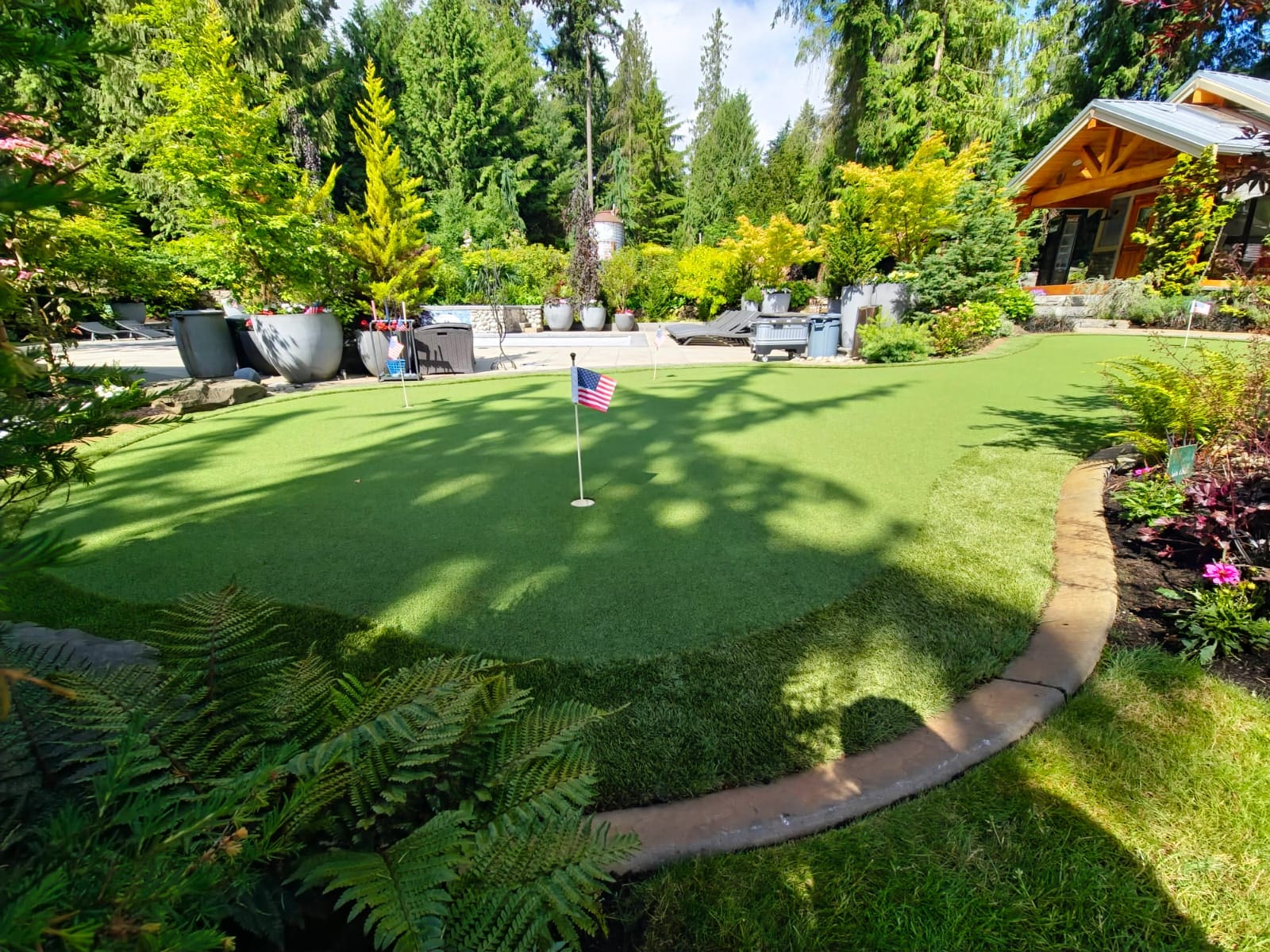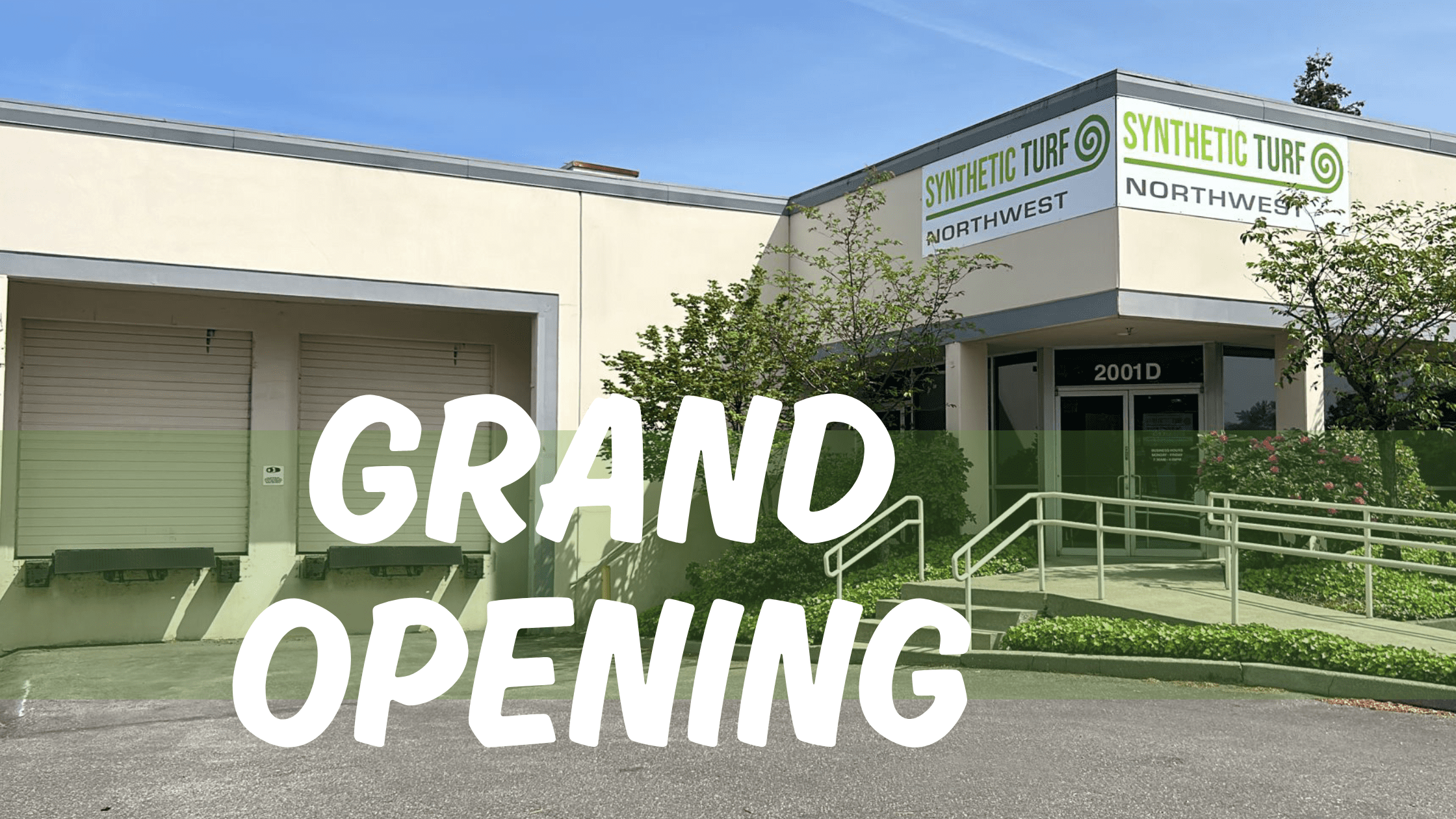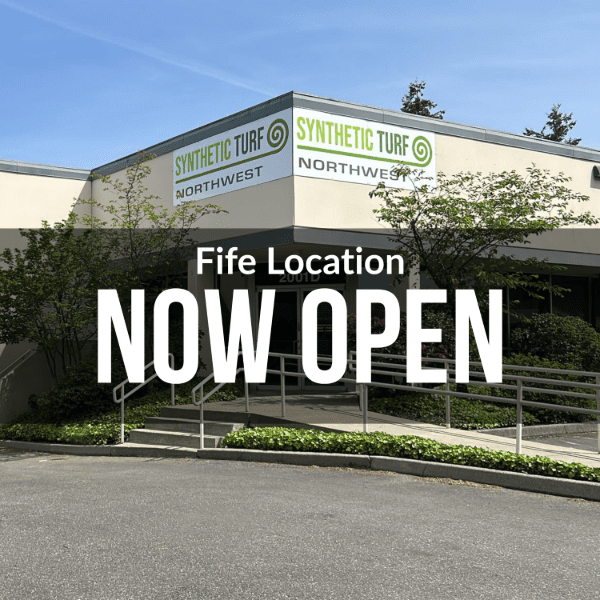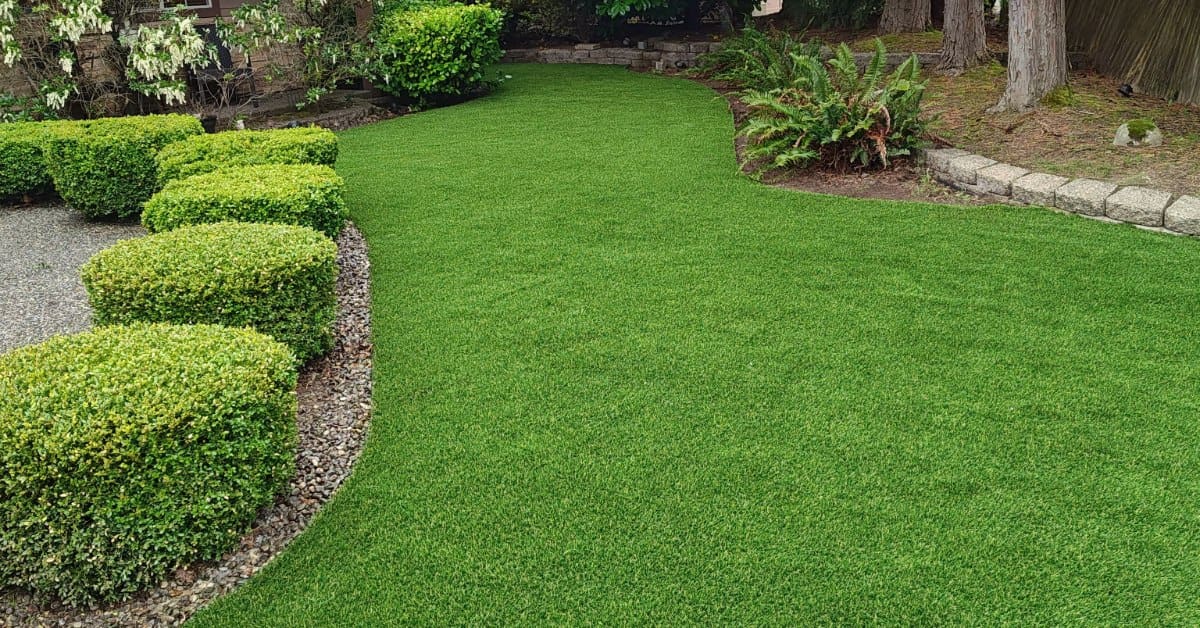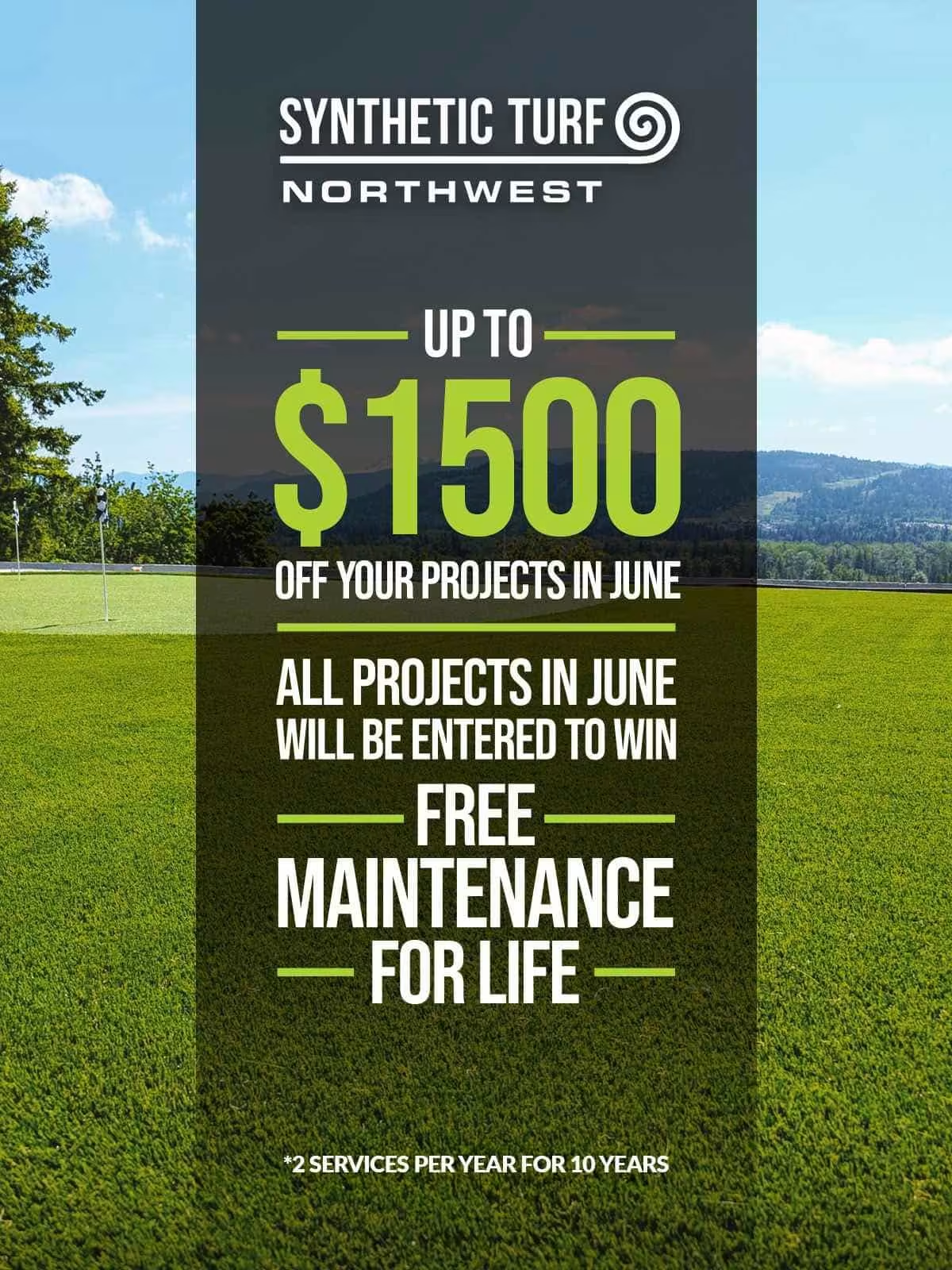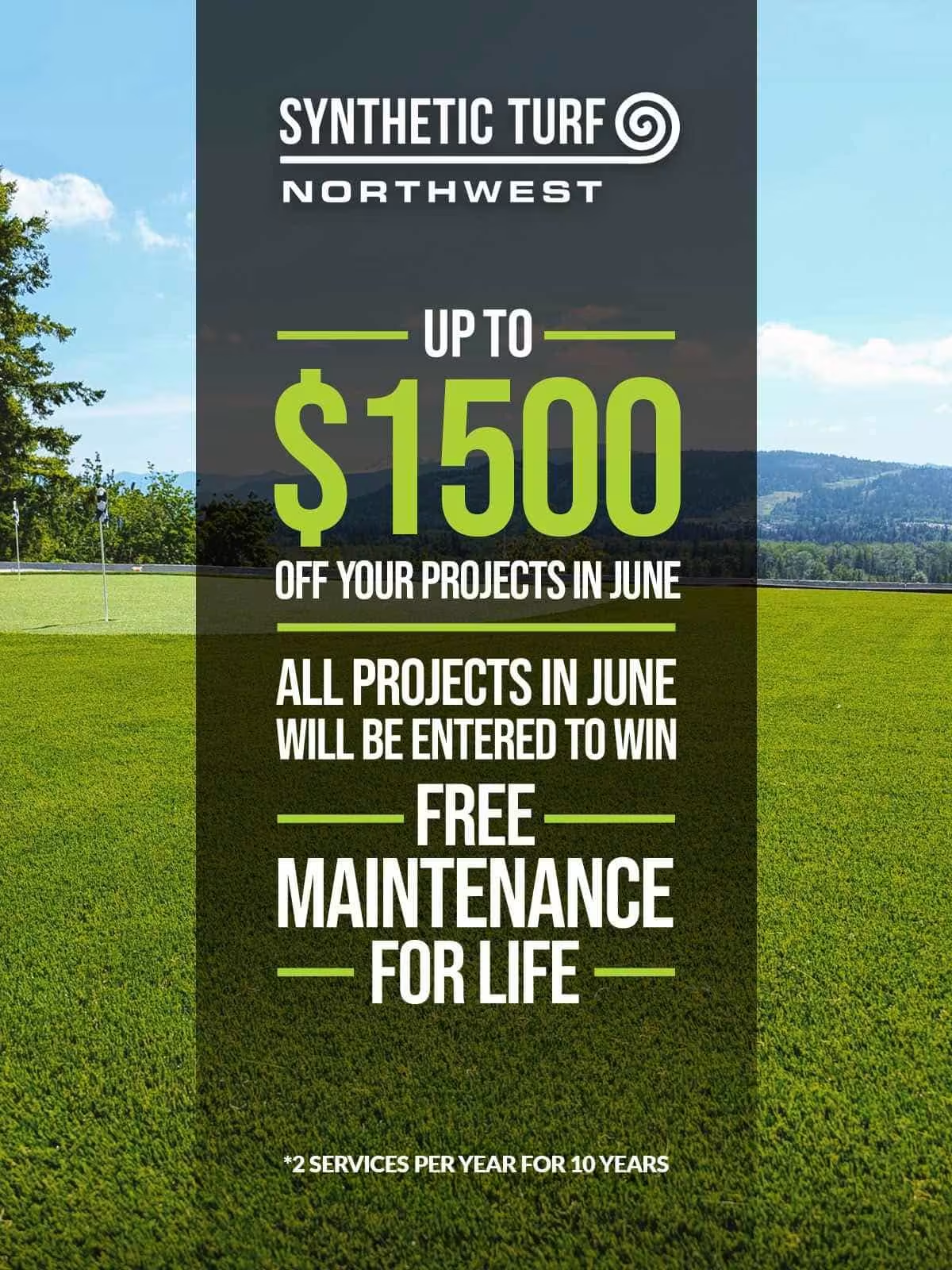Many people know synthetic turf for its outstanding greenery, pet-friendly blades, and low maintenance. Still, every artificial grass owner must know about the components that provide these benefits. For example, many people don’t realize the base, or what goes under the grass, is equally important as the blades themselves. For those who don’t know, here’s what can go under artificial turf to make it a great lawn alternative.
Geotextile Paper/Mesh Weed Barrier Base For Artificial Grass
These are mesh membranes designed to stop weeds from germinating in the turf. Keep the weed fabric at least 100mm thick, overlapping with the stone-crushed material mixture for the best protection. Geotextile paper is the most commonly used underlayment for artificial turf, which is also called a geotextile mat. When installing artificial turf, it is very important to install the geotextile paper under the turf. There are many reasons for installing the geotextile underlayment. Firstly, the geotextile paper will prevent the growth of weeds and grass seeds, which can affect the artificial turf surface. Secondly, the geotextile paper will also protect the soil from being compacted by the artificial turf infill, which will help to keep the soil in a loose state, and it will allow for better drainage. Thirdly, the geotextile paper will also give the artificial turf a solid base to sit on. In summary, the geotextile paper will help to protect the soil, which is one of the most important components of artificial turf installation.
Geotextile paper or mesh weed barrier consists of woven materials, generally polypropylene, which excludes light to inhibit weed growth. It is available in rolls, each several feet wide. Geotextile fabric usually comes in 30-inch wide rolls in two grades; landscape and commercial/agricultural. The landscape grade is good for mulching shrubs, flowers, pre-emergent weed control, and general landscape fabric use. The commercial-grade can be used under pavers and as a moisture barrier for slopes.
Geotextile paper or mesh weed barrier is very thin but strong geotextile and made from 100% Polypropylene. It is a kind of non-woven fabric and woven by a special weaving machine with glass fiber, polyester fiber, and other three kinds of raw material. It has strong permeability, resistance to water and tear strength, etc. Depending on the purpose you want to achieve with this barrier, choose the right product to complete your project:
Commercial and Agricultural Grade: This is a lower-priced, thicker barrier designed for agricultural and commercial use. It can be used under pavers and as a moisture barrier for slopes. Since it’s not as permeable, landscape fabric grade should be placed on top of this material.
Landscape Grade: This lightweight landscape fabric is more permeable so it can be used to control weeds for mulching shrubs, flowers, pre-emergent weed control, and general landscape fabric use. It is recommended to place a thicker more rugged grade on top of this barrier.
Geotextile paper or mesh weed barriers are widely used in construction. Because this kind of material has many properties, such as anti-erosion, waterproofing, filtration, and so on they are also great as a base for artificial grass. So it is widely used in the construction of gravel roads, mountain highways, railways, airport runways, yard paving and can be also made into filter fabric for water purify sewage treatment.
Generally, Geotextile paper or mesh weed barriers are classified into two types: woven type and non-woven type. Woven geotextile has high strength, good tightness, good permeability, low water absorption rate, and small elongation at breakage. While for Non-Woven geotextile is light, high flexibility, easy to form, and low cost. Geotextile paper or mesh weed barriers are also used to filter out any fine particles from the stone-crushed mixture so it doesn’t clog up the drainage system underneath.
Crushed Aggregate/Gravel As An Artificial Grass Base
Gravel is used to creating a permeable compact rock base to create the drainage field. For lawn turf installation, ⅝ minus is used while ⅜” minus is used for putting green installs. For both types of applications, the gravel is compacted every couple of inches which creates a stable and fast-draining foundation. In general, gravel is a mixture of rocks and pebbles. Gravel can also be crushed stone or other types of aggregates. However, in the construction industry, gravel specifically refers to angular pieces of rock that range 2-64 mm (0.08-2.5 inches) in diameter. The typical size for gravel is between 3/8″ and 2″. Gravel can be used as a base course, sub-base for asphalt roads, or as a decorative feature to create walkways.
Back in the early days, gravel was used to create a strong and stable foundation. In fact, when building a house, it is required that you build the footings below ground level before applying any concrete. Because of this requirement, people started implementing gravel as a base course for their houses’ foundations. The use of gravel spread throughout North America and the rest of the world, where it is now used to create a strong base course for highways and driveways. It also provides a natural look for any surface that requires an appearance similar to dirt or grass.
Additionally, gravel can be used in appending with other materials such as cement to enhance their abilities and performance. One way gravel is currently used is to reduce the permeability of cement. By doing so, water doesn’t easily penetrate through the foundation and accumulate at the bottom; hence reducing the chances of having a weak foundation or one that can cause damage to your house. Gravels drainage properties make it a great candidate as a base when installing artificial grass.
Gravel And Drainage For Your Artificial Turf
In terms of drainage, gravel acts more like a sponge than an escape route for water and other liquids. Gravel is porous, which helps it retain water more efficiently than other materials such as sands for example. As a result, gravel can be ideal for drainage applications where retaining some of the runoff water is beneficial to your property. Furthermore, gravel is less expensive than most materials so it’s an option worth exploring when you are looking to build a new driveway or a drainage field for lawn turf installation.
In closing, gravel can be used in many different applications because of its durability and porous nature. In the construction industry, it is often used as a base course or to build strong foundations where other materials may not be able to perform well. In appending with cement, gravel has improved the foundation’s stability and ability to withstand a lot of weight. In terms of drainage, gravel has been in use for a long time, but it is also becoming popular amongst individuals who want to create a permeable driveway or base course because it’s less expensive than other materials yet provides an attractive look.
Other artificial turf base products –
Foam padding, drainage tiles In addition to the other items mentioned above, there are specialty items that can be under the turf. Foam padding can be utilized for playgrounds and surfaces where kids play to provide additional fall protection against serious injuries. For special projects that are not on a traditional soil base, such as rooftops or concrete patios, drainage tiles can go under the artificial turf to provide adequate drainage.
Installing Drainage Tiles As An Artificial Tile Base
A second purpose of laying interlocking PVC tiles is to allow removal and replacement. This may be necessary in some cases for a number of reasons: poor compaction, hot weather, or frost that causes soil to swell or contract can alter the way your turf once laid and you will need to remove it and lay it again (a costly mistake if you have a large area). The best way to avoid this problem is to hire a professional turf installer. A good installer will do the preparation work, choose the right soil, and lay it correctly so that your lawn or garden can be laid in an easier way.
The next thing to consider when choosing interlocking PVC tiles is your budget. To begin with, you will need to determine what kind of turf and where it is going. You can dig up an area and lay a UV-resistant artificial grass or cover the soil with weed fabric and put down landscape fabric over it before putting in interlocking PVC tiles, for example. More than likely, however, if you have a large area to fill, you will just want to purchase turf in bulk and lay it over your existing lawn. You can purchase turf per square foot or you may have to buy it in bulk. Whichever kind of installation method you choose, do some research about the different kinds of turf available and how much they cost so that you will have a good idea of what your project is going to cost overall.
We at Synthetic Turf Northwest will use the best base for your artificial turf. As professional artificial grass installers, we know the importance of artificial grass being done right. Our award-winning service and customer satisfaction prove our loyalty to the craft and to you. Whether you’re installing a backyard golf green, commercial lawn, or residential patch, call us today for your artificial grass needs.

